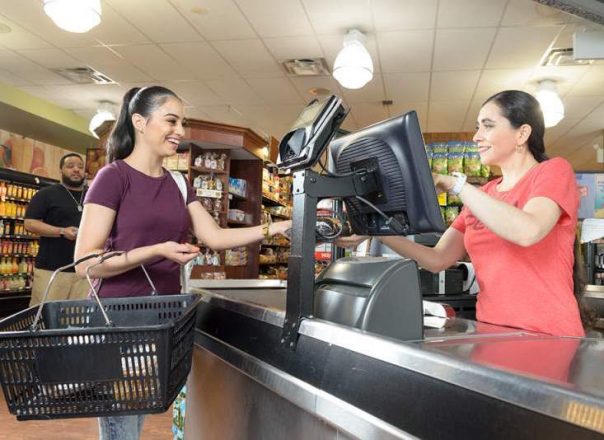
Eric Strausman
Three years ago, we found out that my daughter has hypoglycemia — very low blood sugar — and celiac disease. This meant that she could no longer eat gluten. This meant that we were going to have to completely revamp the way we thought about food.
 After much weeping and gnashing of teeth, we were ready to embrace our new lives without some of our favorite foods. There was extra mourning over the loss of macaroni and cheese and freshly baked bread. And you can imagine how my kid felt knowing she could never have regular pizza or flour tortillas again. Ever.
After much weeping and gnashing of teeth, we were ready to embrace our new lives without some of our favorite foods. There was extra mourning over the loss of macaroni and cheese and freshly baked bread. And you can imagine how my kid felt knowing she could never have regular pizza or flour tortillas again. Ever.
The Cost of a New Diet
After all the bad news, I realized something else: I was going to have to do a lot of our shopping at Whole Foods. As if changing our entire relationship to food wasn’t bad enough, I also was going to need to shop at a place so expensive that people call it Whole Paycheck.
I’m not too proud to say that I cried over all this — more than once.
I rearranged our budget and put a lot more into my grocery envelope. While there is a mindset that eating healthy is more expensive, and it may be accurate in some cases, consumers overgeneralize this belief where it is not always objectively true, according to a study by the Harvard School of Public Health. Shop around and you’ll find ways to keep costs low and get the best deals possible.
Get Real-Time Spend Notifications — Try it Free >>
Advice From a Friend
After visiting Whole Foods a few times, I knew I had to come up with a strategy. Thankfully, I have a good friend named who’s had some health challenges of her own.
She’s also made some radical changes in her and her family’s diet, but she’s learned how to save money shopping at Whole Foods. She told me that she takes advantage of once-a-year sales that Whole Foods has on items like wild-caught salmon and organic whole chickens.
A few years back, Whole Foods had such a good sale on chickens that my friend bought about 60 of them. They lasted almost a year!
She has an upright freezer in her garage, but it wasn’t big enough to hold them all, so she ended up calling me and bringing some to my house because I had room in my freezer. She saved over $10 per chicken with that sale for a total savings of $600. Amazing!
How to Save Money Shopping at Whole Foods: More Tips and Tricks
With this said, I've got some more tips to help you save money at Whole Foods.
- Precut fruit and vegetables are more expensive to buy at Whole Foods (or anywhere, for that matter) than their uncut counterparts. Skip the prepackaged produce and buy it fresh instead.
- Similarly, if going to the salad bar, skip the chopped fruits and veggies. Instead, just buy them whole and add them to your salad later.
- If you need a few simple ingredients for a recipe, head to the salad bar and grab a couple of each of them instead of buying whole items or packages of things.
- Buy frozen fish instead of getting it fresh. The fish is frozen before it’s shipped to the store, so save money on buying it “fresh” and simply thaw them out at home.
- Shopping for seasonal items will also save you money. For instance, buying avocados or strawberries in December is a lot more expensive than buying them when they’re in season.
- Since Amazon took over Whole Foods, Amazon Prime members can get an extra 10 percent off of sale items. Plus, if you use your Prime Visa at checkout, you’ll get 5 percent back.
- If you buy glass milk jugs, bring them back for a small refund. A bottle deposit will get you a bit of money back on your purchase, and Whole Foods will return the bottles to farmers so they can reuse them.
- Bringing your own bags will save you around 10 cents for every one you use.
- If you only need a small amount of something, ask an employee to cut it and rewrap it for you. Whole Foods is very accommodating when it comes to repackaging produce, among other items. Obviously, you should keep your requests within reason, but don’t be afraid to ask.
- Take advantage of the punch cards many of the deli vendors offer. The customer service desk can tell you all about the various punch card options available at that specific location.
- Items such as cereal and grains are cheaper to buy in bulk, especially if you bring your own containers rather than using the store’s prepackaged counterparts.
- If you do bring your own containers, ask the customer service desk to weigh the containers you use. This way, their weight won’t be factored into the total price at checkout.
- Buying entire cases of products will also save you 10 percent. For example, if you buy six bottles of wine or more than three pounds of meat, you’ll get 10 percent off.
- Look for yellow and red tags. Clearance and discount items are not usually advertised but can be identified by the color of their tag.
- Buy the Whole Foods brand “365” for significant savings over some name brands. Once, I purchased some organic applesauce and saved over a dollar per container in comparison to the other brands on the shelf.
- Shopping online through retailers such as Amazon Prime will allow you to view products side by side and compare prices. This can save you time walking around the store and from impulsively throwing attractive items in your shopping basket. You also have time to search for any applicable coupons and apply them to your order. You can then place your order for delivery or pickup.
- Always check the sales flyer before you go, or sign up for the newsletter to have them emailed to you. You can sign up at the Whole Foods website.
- Download the Whole Foods app and scan it at checkout to apply any active discounts to your purchase.
- Stop and look at the produce displays right up front. These displays usually feature that week’s best prices on fruits and veggies. You can prepare some things ahead of time (like strawberries for fruit smoothies) and put them in the freezer for use later.
- My friend also recommends trying to keep track of prices. If you don’t know the normal prices, it will be hard for you to spot a good deal when you see one. Some people keep a notebook or trace prices on their smartphone.
- You can also use money-saving apps such as Ibotta and SavingStar to get additional discounts on your purchases.
Save Without Ever Lifting a Finger — Learn More >>
Final Thoughts on How to Save Money Shopping at Whole Foods
Those of us who have health issues and special diets will always spend more at the grocery store. But with a little extra planning, you don’t have to spend your entire paycheck at Whole Foods.
To some, Whole Foods may seem like the kind of place you shop at only for specialty items or special occasions and not a place where you can do your weekly grocery shopping because of how expensive it appears on the surface. But it’s possible to shop smart, save money, and get the high-quality food you know you deserve.
Don’t forget to always go in with a list and use these strategies to cut costs. You might be surprised by just how much you can afford, even on a budget.
Save Time and Eat Better With Personalized Recipes and Grocery Lists — Visit Site >>
Additional reporting by Kelly Meehan Brown.










